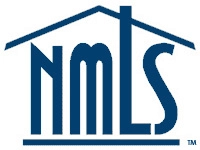QM VS. NON-QM LOANS: AN OVERVIEW
The financial market is constantly changing, and finding the right loan solution for your clients can be tough. Knowing the different loan types to offer can give you an edge.
If you’re a Qualified Mortgage (QM) broker considering adding Non-Qualified Mortgages (Non-QM) to your product offering toolkit, we’ve put together a simple overview of QM vs. Non-QM loans for you.
Read on to understand the differences between these two and the advantages of providing Non-QM loans.
Understanding QM Vs. Non-QM Loans
QM loans are conforming loans that meet specific requirements set by the Consumer Financial Protection Bureau. They include conditions like limiting loan features that can increase risk, capping points and fees. To qualify, borrowers typically need traditional income docs (W-2s and paystubs), credit history, and low monthly debt.
Non-QM loans, on the other hand, do not need to meet these same requirements. This doesn’t mean they’re risky or irresponsible, though. Non-QM loans simply offer flexibility that QM loans simply don’t. For instance, they may consider alternate forms of income or allow for higher debt-to-income ratios. This makes them particularly useful for borrowers with non-traditional income sources.
Who Benefits From Non-QM Loans?
Certain types of borrowers should consider Non-QM loans. These include those who need a different approach to providing income documentation, have a high debt-to-income ratio, or fall into the following categories:
- Self-employed
- Contractors
- Retired
- Gig workers
- Landlords
- Foreign nationals
- House flippers
- Real estate investors
LendSure’s Non-QM Loans
Having Non-QM loans in your loan toolkit is invaluable. It allows you to offer solutions to a broader range of clients, set you apart from competitors, adapt to market trends, and say “yes” more often.
You have plenty of options to choose from for your clients. Explore some of our Non-QM loan programs:
- Bank Statement: This alternative allows borrowers who can’t provide traditional income documentation to secure financing using their bank statements.
- BOOST (bridge financing): Through this program, borrowers can tap into the equity in their existing homes by taking cash out to use as a down payment on a new home.
- Reverse 1031 Exchange with Bridge Loan: This program helps borrowers act fast on promising investment opportunities. Allowing them to buy now and sell later.
- Profit & Loss: Borrowers with fluctuating incomes or cash businesses can qualify for financing via their business’ Profit & Loss statement.
- Debt-Service Coverage Ratio (DSCR): This program focuses on the property’s cash flow, eliminating the need for additional income documentation. Available for 1- to 8-unit investment properties.
- Foreign National Loans: This is a Non-QM solution for foreign nationals seeking to finance a 1- to 4-unit investment property in the U.S.
- Fix and Flip: Perfect for real estate investors with any level of experience who buy and renovate properties.
- Asset Depletion / Asset Qualifier: For borrowers who don’t have a steady monthly income, they can use their assets to qualify for a mortgage.
- LendSure Blog April 17, 2024














